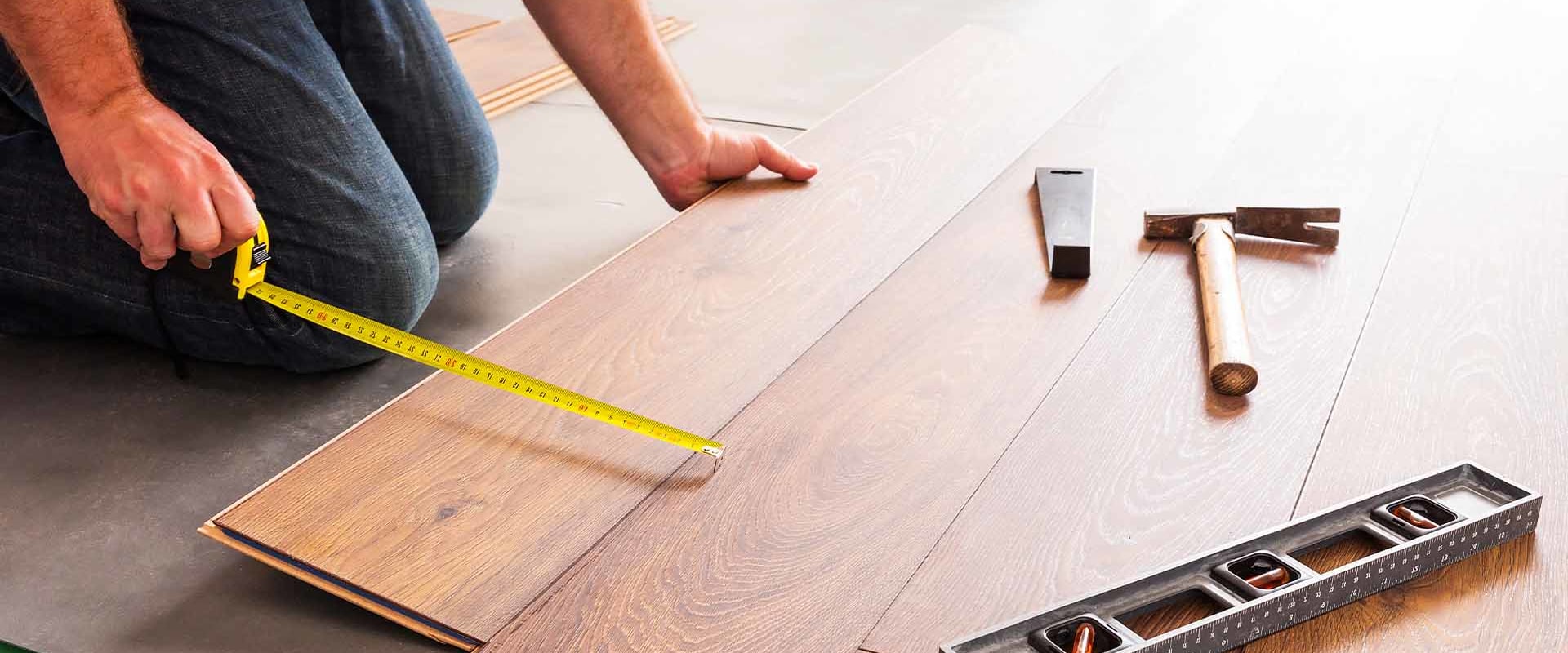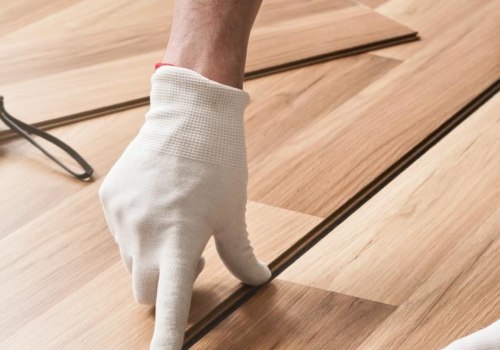For a floor covering that looks exactly like solid wood, but is easier to maintain, engineered floors are the best option. If you're looking to save money on your floor covering, laminate floors are a better choice than designer hardwood floors, especially when combined with self-installation. Overall, engineered wood offers a higher resale value to a home than laminate floors. Engineered wood may even rival solid wood for its prestige, though knowledgeable homebuyers will recognize that it lacks the longevity of solid wood.
Both hardwood and laminate floors are quite easy to install, but laminate floors tend to be a little easier for DIYers.
Designer hardwood floors
often require gluing the material in place, while laminate floors can generally float, making them a true lock and drop solution. A major difference when it comes to installing these floors is the subfloor requirements. A laminate floor can be floated and almost all floors can be floated except the carpet.A designer wood floor needs a more stable and structurally sound subfloor. What is the difference between designer wood vs. A laminate? And most importantly, which one is best for your home? The main differences between designer wood and solid wood lie in their construction and composition. The designer wood is made of 2 layers joined together.
Compare this to all the trees involved in creating solid wood floors, and the consequences are quite undeniable for our ecosystem. Designer wood is the most sustainable option for hardwood floors. This is also true when it comes to laminates, but we will analyze the environmental impacts of designer wood versus. Unlike solid wood, engineered wood can withstand large changes in temperature and humidity.
This means you can place it above the concrete subfloor, in rooms below ground level and even in kitchens and half bathrooms. Oh, and if you're wondering “what is subfloor”, it's just the surface under your finished floor. Ease of installation is one of the biggest advantages of designer wood. That's not the case for solid wood.
Solid wood can be sanded and refinished an unlimited number of times. Designer wood is limited by the thickness of its veneer layer. Most designer woods can only be refinished a handful of times, if at all. In short, they are two completely different types of floors.
They share very little in common outside of appearance. Laminate is like comparing apples and oranges. Unlike engineered hardwood, laminate is not real wood. It is a type of multi-layer composite floor, with no real hardwood anywhere in its composition.
It's usually sold in planks that look like pre-finished hardwood floors, but that's where the similarities end. When we compare designer wood with. Side by Side Laminate Next, you'll see what we mean, but for now, suffice to say that laminate floors can be very affordable. When we compare the installation methods of engineered hardwood with.
And here's when the differences in wood design vs. Laminate Debate Begins to Come Out. While you can refine designer wood (you can even whiten hardwood floors if you want), you can't refine laminate. Now that we've covered the basics of these two floors, let's go into the main event and compare designer wood to.
Price is where laminate maintains its greatest advantage over. Costs for hardwood floors can be quite significant. If you're looking for the least expensive route, laminate is the way to go. It is noticeably less expensive than designer wood.
Laminate Debate Gets a Little Complex When It Comes to Durability. This is because both options are very durable in different ways. Because engineered wood is usually manufactured with a plywood base, it is usually more stable than laminate, which often has a base made of wood by-products. Again, this is not a firm and true statement for all products.
But if you compare the longevity of designer wood with. Laminate, you'll see that the former is generally more durable. Engineered hardwood has the upper hand when it comes to lifespan. When the wear layer of the laminate is worn, it is ready.
Engineered wood, on the other hand, can often be refinished, which can add decades to its lifespan. Does that mean engineered wood is difficult to install? Not necessarily, you can generally install it in most (if not all) of the same ways as laminate. But the cost of installing designer hardwood floors is usually a little higher. Designer wood is cared for in the same way as solid wood.
It's not much harder to clean than laminating a wet mop with a special hardwood cleaner. But there is a little more maintenance related to real wood to keep it free from scratches, such as floor wax and the use of furniture pads. It all depends on how you define “better”. This is a good time to consider what you are looking for in your apartment.
If you're looking for genuine wood that can last almost a lifetime with proper maintenance, then yes, designer hardwood floors are better. We talked briefly about vinyl before, but how does it compare to engineered hardwood and laminate? Still, there are some downsides to vinyl plank flooring that designer wood and laminate don't share. For one thing, it's not an environmentally friendly flooring option, as not many vinyl plank brands sell recyclable products. Engineered hardwood and laminate floors act as a beautiful, durable floor for your room, and each of them accomplish this in different ways.
Laminate flooring can prevent scratches and dents. While an untrimmed dog paw or heavy furniture can damage your designer hardwood floor, laminate floors will be fine. Laminate floors also don't fade in the sun or stain as easily as designer wood. That said, laminate floors can chip over time.
Nor can you finish laminate the way you do with designer wood. While a little more care may be needed to protect your designer hardwood floors, they tend to last many years longer than a typical laminate floor. Neither laminate nor engineered wood is an excellent choice for damp and damp locations, although both are better than solid wood in these situations. Most prospective buyers will recognize designer hardwood floors as decidedly superior to laminate flooring.
Keep reading to learn more about these two types of floors so you can make the best choice between designer hardwood floors and laminate floors. Engineered hardwood also allows you to sand and polish the floor after several years, as long as the veneer is thick enough. Whichever option you choose, both options are more water resistant than a traditional hardwood floor, though the edge certainly goes to the laminate. After analyzing the similarities and differences, it becomes clear that the winner of designer wood vs.
Instead of being solid wood from start to finish, designer hardwood floors bond a relatively thin layer of real wood onto a high-quality plywood substrate. You can take care of scratches on your designer hardwood floor with scratch corrector, touch-up or repair kits, and other useful products. Designer wood is still a hardwood floor, so it requires many of the same maintenance and maintenance. However, while both hardwood and laminate floors are water resistant, neither.
Both floor coverings were developed as economical and versatile alternatives to that pillar of flooring material, solid wood floors. If price plays a role in your decision, designer hardwood floors will generally be priced higher, but that's not always the case. Most tile types have the edge here, as they are waterproof, and you can even buy wood-look tiles that resemble hardwood. You can also perform the occasional deep cleaning by using special products designed for your laminate or engineered wood floor.
. .




